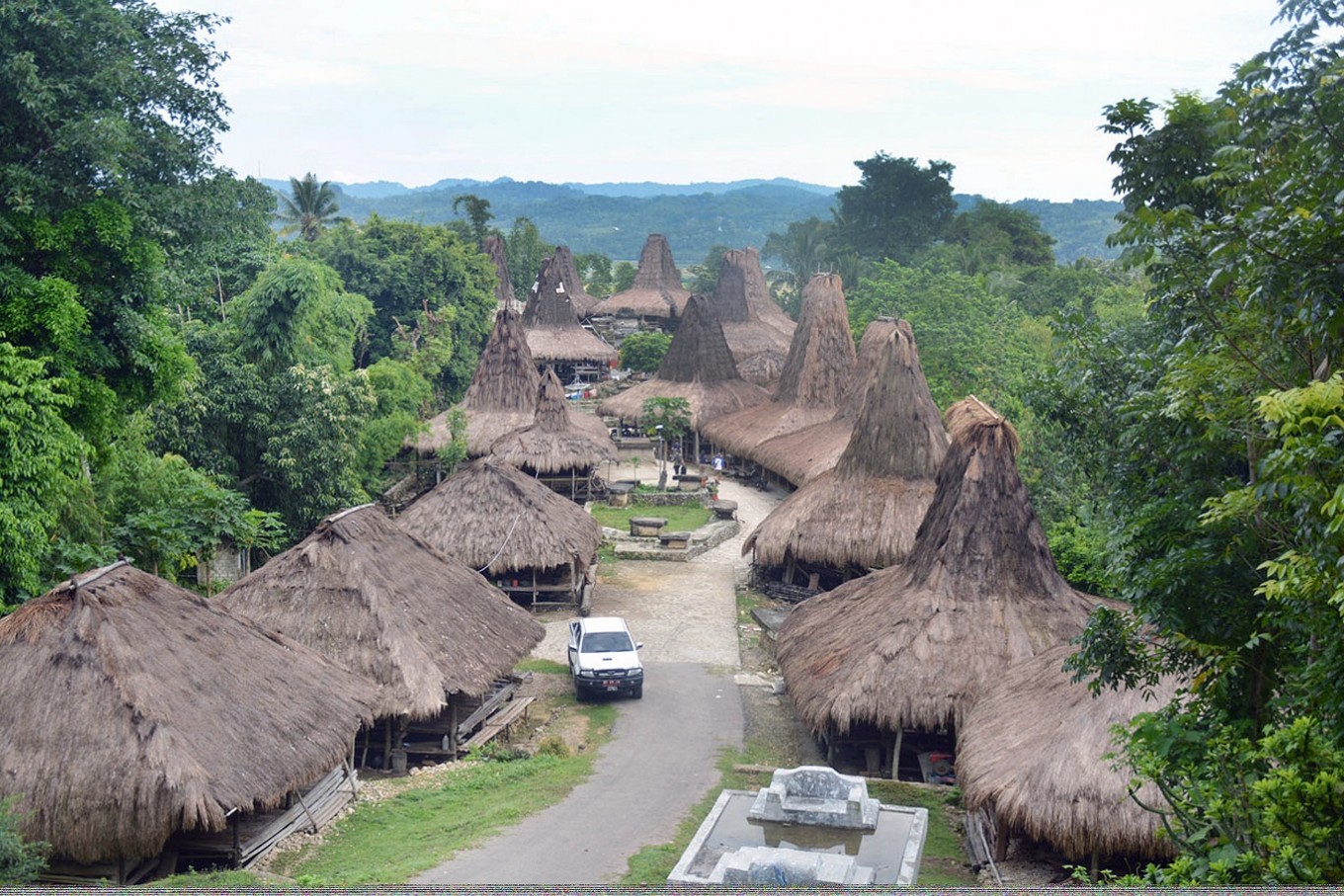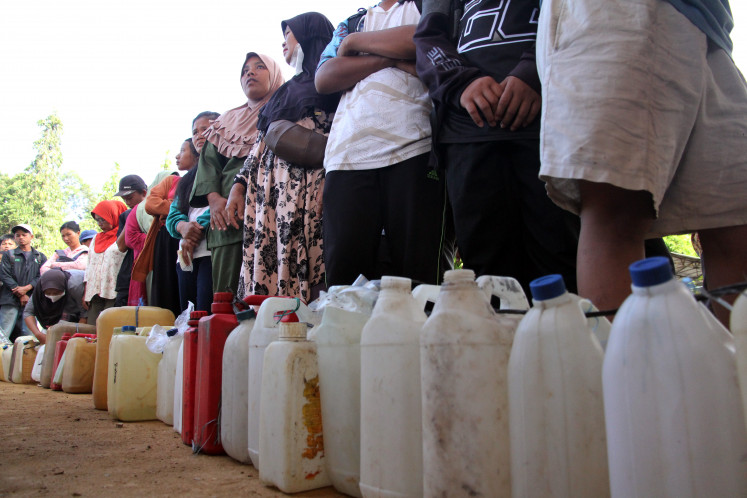Popular Reads
Top Results
Can't find what you're looking for?
View all search resultsPopular Reads
Top Results
Can't find what you're looking for?
View all search resultsExploring Sumba Island's natural and cultural riches
The natural wonders and cultural riches of Sumba Island in East Nusa Tenggara never fail to amaze visitors.
Change text size
Gift Premium Articles
to Anyone
F
ather Robert Ramone describes Sumba as a forgotten island in his pictorial book, Sumba: Forgotten Island, published in Holland. Sumba Island in fact shouldn’t be a forgotten island, because it has so much to offer.
The island abounds with distinctive natural and cultural highlights like unique woven fabrics, traditional villages, megalithic tombs, beautiful beaches and the country’s vastest savanna landscape.
Sumba, which also boasts the Manupeu Tanah Daru and Laiwangi Wanggameti (MataLawa) national parks, is a home to various endemic butterflies and birds, the highest waterfall in East Nusa Tenggara, unique traditional costumes and preserved system of kingship — all of which contribute to the nation’s international repute.
Read also: Sumba’s MaTaLaWa National Park lures visitors with ecological attractions
With such resources, the only way to fully grasp the real beauty of this part of Indonesia is to take an extensive tour across the island.
The Jakarta Post joined a recent tour of Sumba led by head of MataLawa National Park Maman Surahman and his staff to cross the Trans Sumba highway. Along the route they described Sumba’s four regencies — Southwest, West, Central and East Sumba — and their attractive features, including the Prai Ijing traditional village, the Pasola spear fighting tradition, the highest peak of Mount Wanggameti, the Sumba wedding ritual and the local people’s Marapu faith.
“Sumba has its own style of architecture. Sumba women also weave ikat, fabrics with patterns created with tie-dye method. They wear the woven clothes with accessories and their community leaders carry daggers. Meanwhile, traditional village women hold earthen jugs on the head as their daily practice and on ritual occasions,” Maman said.
He said the goal for MataLawa National Park is the development of the islands tourism based on its ecology and culture. This strategy is aimed at giving the Sumba community the opportunity to enjoy the economic impacts of tourism and also to encourage them to safeguard MataLawa, which provides sources of clean drinking water, irrigation and micro-hydro power.
“Let’s conserve the national park’s resources for our generations of the next century. The assets of tourism should benefit the island’s population,” Maman said.
Marthen Ragowino Bira, the former village head of Tebar, Kota district, West Sumba, referred to the Prai Ijing settlement in Tebar as a one of the main tourist destinations due to its traditional housing architecture, ancestral rituals and Sumba ikat center.
Read also: 'Pasola': Centuries old ritual of Sumba
The 90-meter high Lapopu waterfall is located in Hatikuloku village, Wanokaka district, West Sumba, and is the highest in East Nusa Tenggara (NTT), falling in stages down a steep rocky slope into a pool.
The savanna of Waerinding, East Sumba, is perhaps the most popular place in the regency for taking selfies and watching the sunset, besides being a vast cattle grazing area.
From the summit of Mount Wanggameti in East Sumba, tourists can enjoy spectacular views of the green and immense savanna with hundreds of grazing buffalos, cows, horses and goats. “The rolling hills of the savanna come in three colors, brown, black and green, which compare with Flores Island’s three red, green and blue lakes,” MataLawa staffer Tri Wiyato pointed out.
Sumba people are proud of their island’s natural beauty, which is reminiscent of Africa’s savanna plains. Agust Dapa Loka, an Indonesian language teacher in Waingapu, the capital of East Sumba, praises the great plains of Sumba in his award winning poetry anthology, Gemerisik Ilalang Padang Sabana (The rustling tall grass of savanna).
For travellers who want to experience the many sides of Indonesia, an expedition to Sumba is a must.







